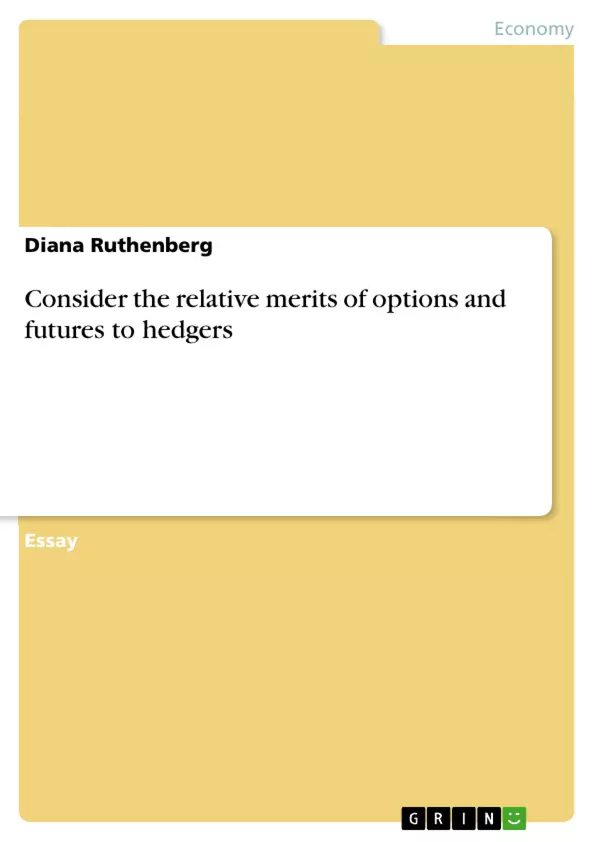Firstly, this report will depict briefly the notion of hedging and than emphasize the characteristics of a futures contract and an options contract. Then it aims to discuss the differences between both contracts and their role as an important risk management tool to remove risk.
In the course of a globalised world, an increasing number of companies have trade partners not only on a national basis but also on an international basis. This in turn has led to the fact that companies trading on an international basis have been concerned about fluctuations in all kinds of financial prices. Financial prices include foreign exchange rates, interest rates, commodity prices and equity prices, whereas the foreign exchange rate has become the biggest issue for many companies (Sooran, C., 2005). The effect of changes in these prices on reported earnings can be overwhelming, so that companies try to protect themselves against exchange rate fluctuations which entail exchange rate risk, by using options and futures
Inhaltsverzeichnis (Table of Contents)
- Abstract
- Futures
- Options
- Conclusion
Zielsetzung und Themenschwerpunkte (Objectives and Key Themes)
This report aims to compare and contrast futures and options contracts as tools for hedging financial risk. The report explores the characteristics of each type of contract and their role in managing risk in a globalized economy.
- The concept of hedging and its importance in international trade
- The characteristics and functionality of futures contracts
- The characteristics and functionality of options contracts
- The relative merits of futures and options for hedging different types of risk
- The role of derivative instruments in managing financial risk
Zusammenfassung der Kapitel (Chapter Summaries)
The "Abstract" chapter briefly introduces the concept of hedging and outlines the key characteristics of both futures and options contracts. It highlights the increasing need for risk management tools in the globalized world, especially in relation to foreign exchange rate fluctuations.
The "Futures" chapter provides a detailed explanation of futures contracts. It explores the mechanics of futures trading, including the role of clearing houses, margin requirements, and the marking-to-market process. It also outlines the advantages and disadvantages of futures contracts for hedging, emphasizing their suitability for symmetric risks.
The "Options" chapter examines the concept of options contracts, differentiating between call and put options. It delves into the valuation and pricing of options, including the Black-Scholes Option-Pricing Model. The chapter further explores the benefits of options for transferring risk and their suitability for hedging asymmetric risks.
Schlüsselwörter (Keywords)
The primary keywords and topics explored in this document include: hedging, financial risk management, futures contracts, options contracts, clearing houses, margin requirements, marking-to-market, Black-Scholes Option-Pricing Model, symmetric risks, asymmetric risks, derivative instruments, and foreign exchange risk.
- Quote paper
- Diplom Betriebswirtin (FH) Diana Ruthenberg (Author), 2005, Consider the relative merits of options and futures to hedgers, Munich, GRIN Verlag, https://www.grin.com/document/134531



